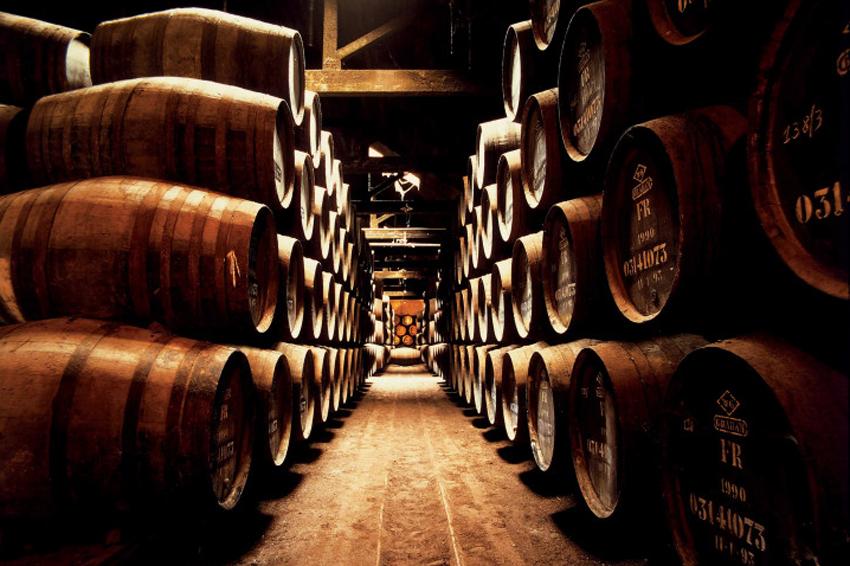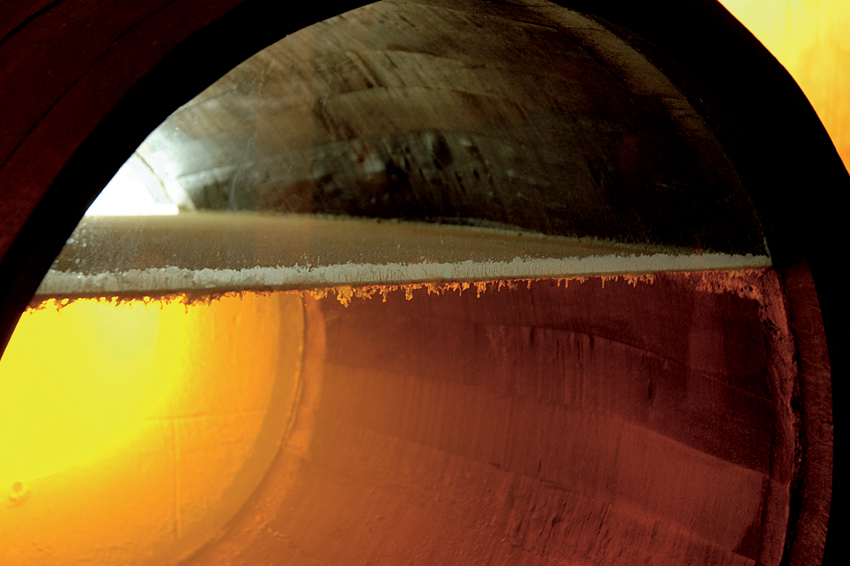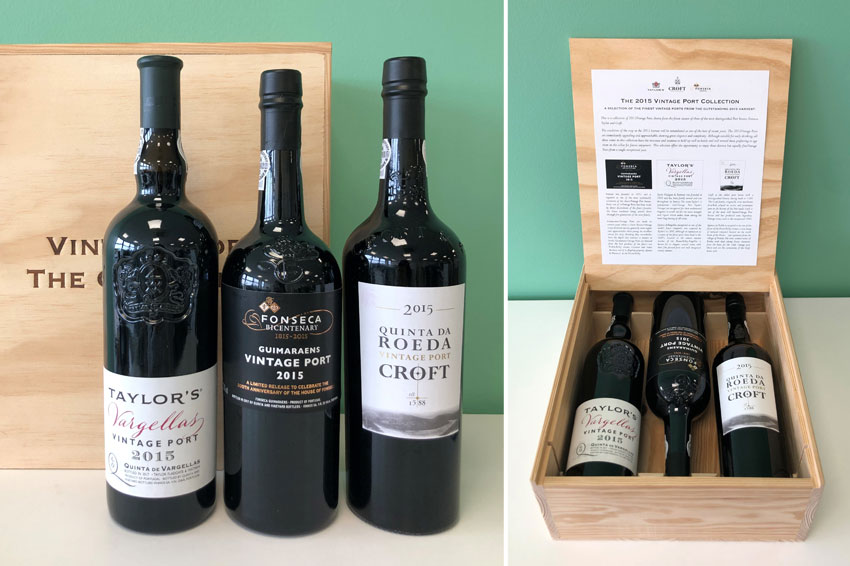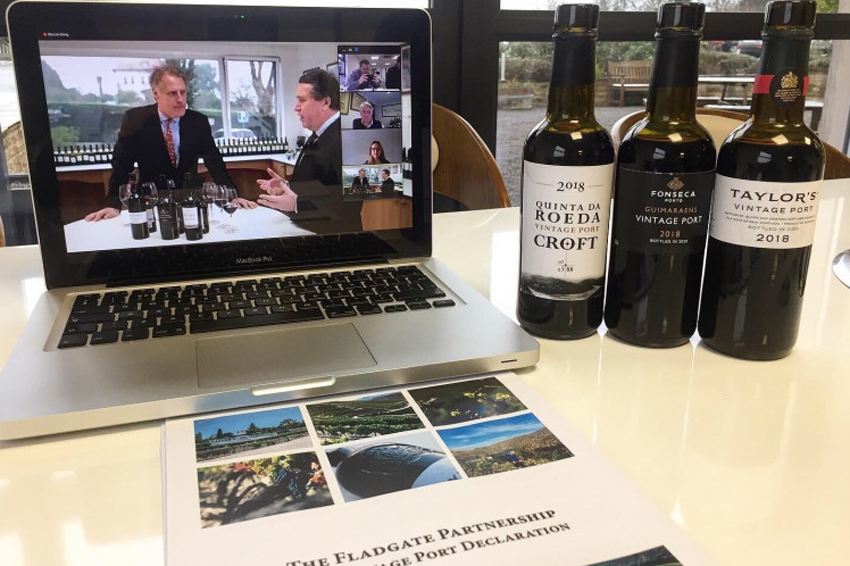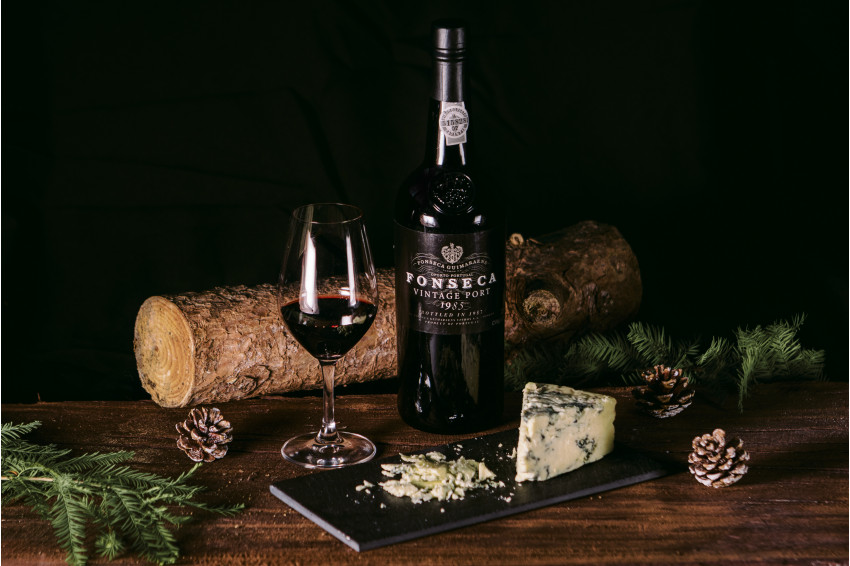The origins of Port, like all fortified wine, lie in the need to stabilise and protect light table wines from spoilage during long sea voyages. Port became popular in England after the signing of the Methuen Treaty of 1703 between England and Portugal which gave further encouragement to the Port wine business, establishing that Portuguese wines imported into England should pay one third less duty than those from France!
To stop the wines from spoiling before the reached British shores, the shippers would add some brandy to preserve them, creating a very potent dry red wine. It was a while later that the English ventured into the Douro Valley to make wine and decided to add a neutral grape spirit (called aguardente) before the wine had finished fermenting to keep the wine sweet. The added alcohol stopped fermentation by killing off the yeast, before it consumed all of the grape sugars. From that point onwards, Port has been the naturally sweet and high alcohol wine that we know and love today, In 1756, in a drive to protect Port from poor imitations from other regions, the Douro Valley was demarcated as the only area that could produce genuine Port.
Steeped in tradition and with an extraordinary history and heritage, Port has always been able to adapt and thrive, attracting new generations of consumers to its delights. The interest in the culture, provenance, sustainability and the art of wine and food pairing has ensured that there is always a place for port at the table. Consumers everywhere are becoming more knowledgeable and curious and therefore more likely to be attracted to wines such as Port which represent genuine quality and tradition and which have fascinating stories to tell.


STYLES OF PORT
Ruby
The most basic style, blended from the produce of several harvests and aged for no longer than a couple of years. They are deeply coloured, sweet, simple and fruity wines. Serve at room temperature on their own or with mature hard cheeses. We reccomend Quinta do Noval Ruby.
Late Bottled Vintage (LBV)
The produce of a single vintage (specified on the label), they are basically the vintage wines produced in a non-declared vintage year and the quality is very good. They are aged between 4-6 years and are ready to drink on release. They show intense red and black fruit flavours with a hint of sweet spice. We highly recommend Grahams LBV 2015. Pair with strong cheese and dark chocolate desserts.
Vintage Port
Vintage Ports are very long-lived wines from the best vineyard sites, only made in exceptional years. They are the product of a single year (stated on the label) that is bottled after two- or three-year’s cask aging. Each producer must decide within 2 years of the harvest if the wine is going to be fine enough to be released, unblended as a vintage port. This is known as ‘declaring’ the vintage and it is only when IVDP (Port’s governing body) have approved samples and volumes that in good years (such as 1985) then result in a universal declaration by producers. There are 3 declared vintages per decade on average. Vintage Ports require bottle aging after release and will always throw sediment so remember to decant before drinking and serve at room temperature! We thrilled to have got our hands on a small parcel of Fonseca Vintage Port 1985, a mature vintage port which is drinking beautifully right now.
Single Quinta
These are vintage wines made from a single estate or Quinta. The grapes from these estates will generally be used if a vintage port is made but if not, then they make a single estate where the quality levels are very high. For fine examples of this style try Taylor’s Quinta ‘Terra de Feita’ 2005 or Fonseca ‘Guimaraens’ 2004.
Tawny
Traditionally a basic blended Port that is aged in oak for several years longer than ruby so that the intense fruit flavours break down, colour drops out and the flavour becomes nutty, raisined and oxidative with notes of walnut, coffee chocolate and caramel. Serve lightly chilled. To dip your toe into this style, try Graham's Fine Tawny Port.
Aged Tawny
These Ports are aged for many years in cask. Their label will state the average age of the wines that have been used in the blend i.e. 10, 20, 30 or 40 years old. Aged Tawny’s are made from wines of the very highest quality -wines that may otherwise have been set aside for Vintage Port. They have mellow, spicy, nutty aromas and are silky on the palate. These wines are bottled when they are ready to drink as opposed to Vintage Ports which require additional bottle aging once released. A glass of chilled Quinta do Noval 10yr old Tawny makes a delicious aperitif but is equally matched to hard, nutty cheese or a pudding such as apple pie or baked figs.
For further guidance on Port and finding the perfect style to suit you this Christmas, please do give us a call in the office on 01325 776446.
Feliz Natal!

